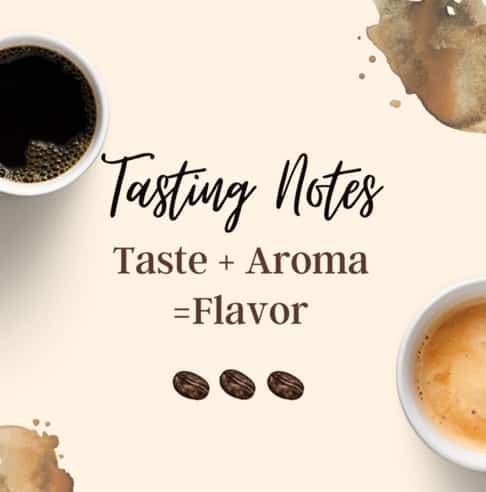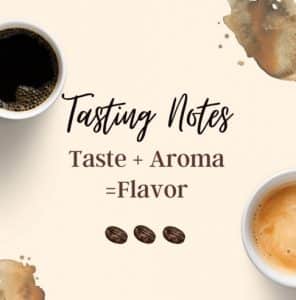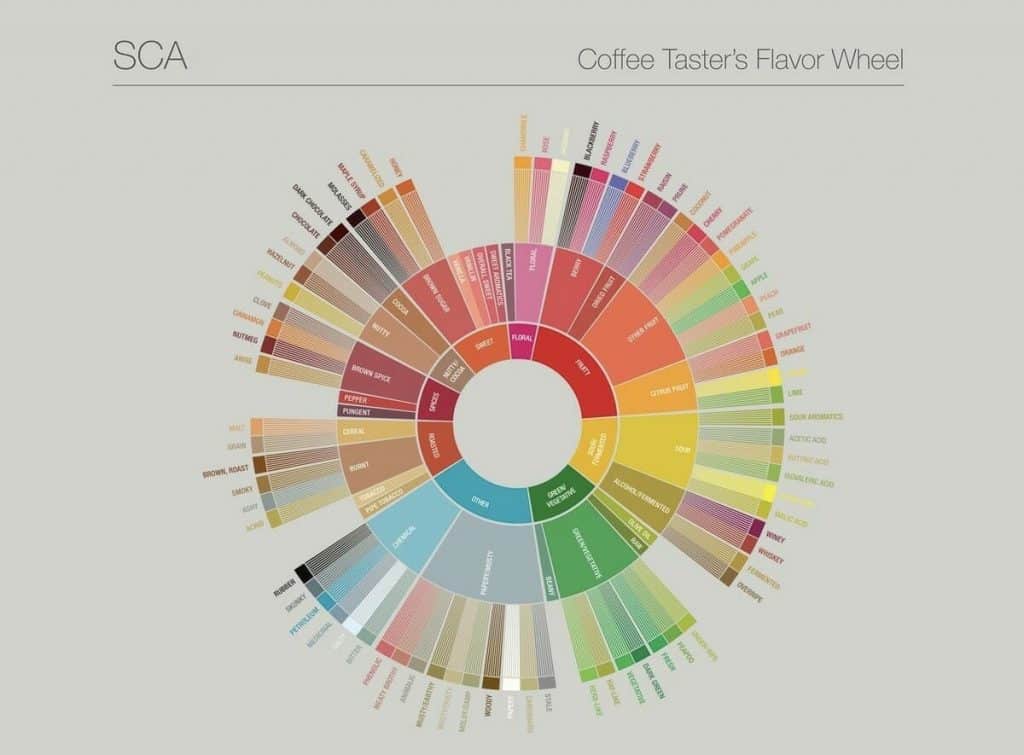- January 27, 2022
What are Coffee Tasting Notes?

Greetings!
Do you ever wonder, what are Coffee Tasting Notes anyway? People talk about them in coffee and wine, sometimes chocolate and teas. But what if you have no idea what they are, how to identify them or if they are important?
Sometimes people think when they hear us describe our Costa Rica coffee with notes of green apple and caramel, that we have added flavoring. We have NOT. We never flavor our gorgeous, single origin coffees. The flavors, or tasting notes, are natural characteristics inherent to each coffee.
If the flavors of coffees are not added, where do they come from? We are going to break it down to help you get the utmost enjoyment out of each cup of coffee. The rich flavor of coffee tells each cup’s story, from how it was planted, cultivated, processed and roasted.
Understanding the flavor story of your coffee
Flavor can be thought of as the sum of taste and aroma. The taste is the sensation you get when something hits your tongue. Is it salty, sweet, sour, bitter, umami? The aroma is that sense of smell, that arouses the deepest of memories, through your nose and the back of your mouth. Much of our experience of flavor is derived from the aroma. Aroma plays a hugely defining role in defining and differentiating flavor.

So what are Coffee Tasting Notes?
Coffee tasting notes, or flavor characteristics are the tasters description of the taste, aroma and character of the coffee. Professional cupping, or tasting experts can identify some very obscure notes in coffee like like maltic acid (say what?!?). However, ultimately, the goal is to help illuminate the intricate flavors of each coffee to guide consumers in their coffee preference. Coffee tasting notes are a result of a coffees soil, care, process and roast, they do not refer to any additive.
The Coffee Taster’s Wheel
In 1995, the Specialty Coffee Association (CSA) published The Coffee Taster’s Wheel as the definitive source of coffee tasting notes. It is reminiscent of a painters color wheel and provides an in depth look at the dynamism present in coffee.

As you can see, there’s a lot happening here. Together with the SCA, the World Coffee Research created this tool to help identify the wild world of coffee tasting notes. While it may look slightly intense, it is a fascinating way to expand your knowledge and understanding of coffees. To engage, start in the middle of the circle to find the largest, most general categories such as fruity, floral, sweet. Then move outward to get more specific within each category; berry, black tea, vanilla and so on. To try it out, brew your favorite cup of Kebon coffee and have the flavor wheel close, here is a link for quick reference, close your eyes and see if you can identify any of the main categories, then work your way out to get more specific. We always provide the top tasting notes of each Kebon coffee that can help get you started.
How can we use tasting notes to learn about coffee?
Now that you have the tools to identify tasting notes, and know that the flavor of coffee tells the story of origin, how can you use the tasting notes to learn more about coffee?
As you begin to pick out the tasting notes that you love, you can find new coffees you are sure to enjoy. In general, coffees with fruit forward notes such as tangerine, and floral notes such as jasmine or magnolia indicate a coffee that is roasted lighter and is generally more acidic. For those fans, we recommend our Costa Rica. Lovers of chocolaty, brown sugar, molasses notes are often ones to enjoy a darker more robust roast that rounds out the edges of acidity and highlights the body and richness. For these fans, we recommend our Guatemala.
Practice, practice, practice
Fortunately, the best way to become a coffee tasting expert is to drink a lot of coffee. You have the why and how, now it’s time to get to sipping. Let the game of coffee tasting note identification embolden you to try and delight in coffees from all over the globe. There is no right or wrong here. Tasting coffee, like anything else, is subjective and because of that it is a never ending and incredibly tasty exploration. It is our hope that this knowledge enhances your coffee experience!
Happy Brewing,
~Winter